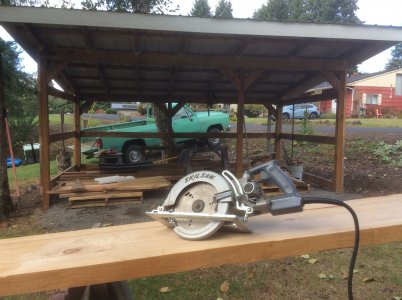- Joined
- Feb 1, 2015
- Messages
- 9,605
My 53 y.o. Craftsman circular saw gave up its blue smoke yesterday. It was the first power tool that I bought. It has had a had but productive life, having cut concrete block and 7/8" thick steel plate among other things. It was well built saw with die cast aluminum housing and served me well.
An autopsy revealed that the field windings had totally failed, Curiously, the wire used was aluminum. At the time, as I recall, aluminum was the latest 5thing, expected to replace copper for electrical wiring.. The rest of the saw, including the armature, looked to be in good shape and the field coils are simple enough so I am thinking about rewinding them. The wire used was .045" diameter which looks to be 17AWG. Copper is a better conductor than aluminum and the rule of thumb is you can go up two wire gauges by substituting copper for aluminum so I would be safe in going to 18AWG copper. Ir will make a nice winter project.
Meanwhile, it's off to the local DIY for a new saw. I doubt that I will see fifty years of use from it though. But then, I haven't got fifty years left in me either.
An autopsy revealed that the field windings had totally failed, Curiously, the wire used was aluminum. At the time, as I recall, aluminum was the latest 5thing, expected to replace copper for electrical wiring.. The rest of the saw, including the armature, looked to be in good shape and the field coils are simple enough so I am thinking about rewinding them. The wire used was .045" diameter which looks to be 17AWG. Copper is a better conductor than aluminum and the rule of thumb is you can go up two wire gauges by substituting copper for aluminum so I would be safe in going to 18AWG copper. Ir will make a nice winter project.
Meanwhile, it's off to the local DIY for a new saw. I doubt that I will see fifty years of use from it though. But then, I haven't got fifty years left in me either.


